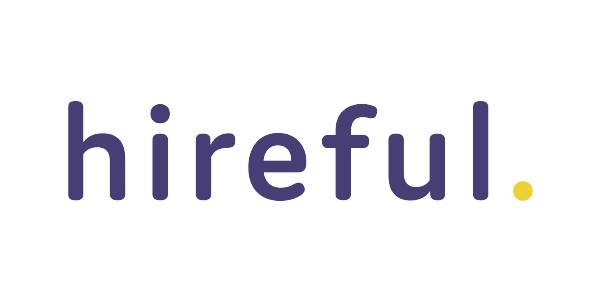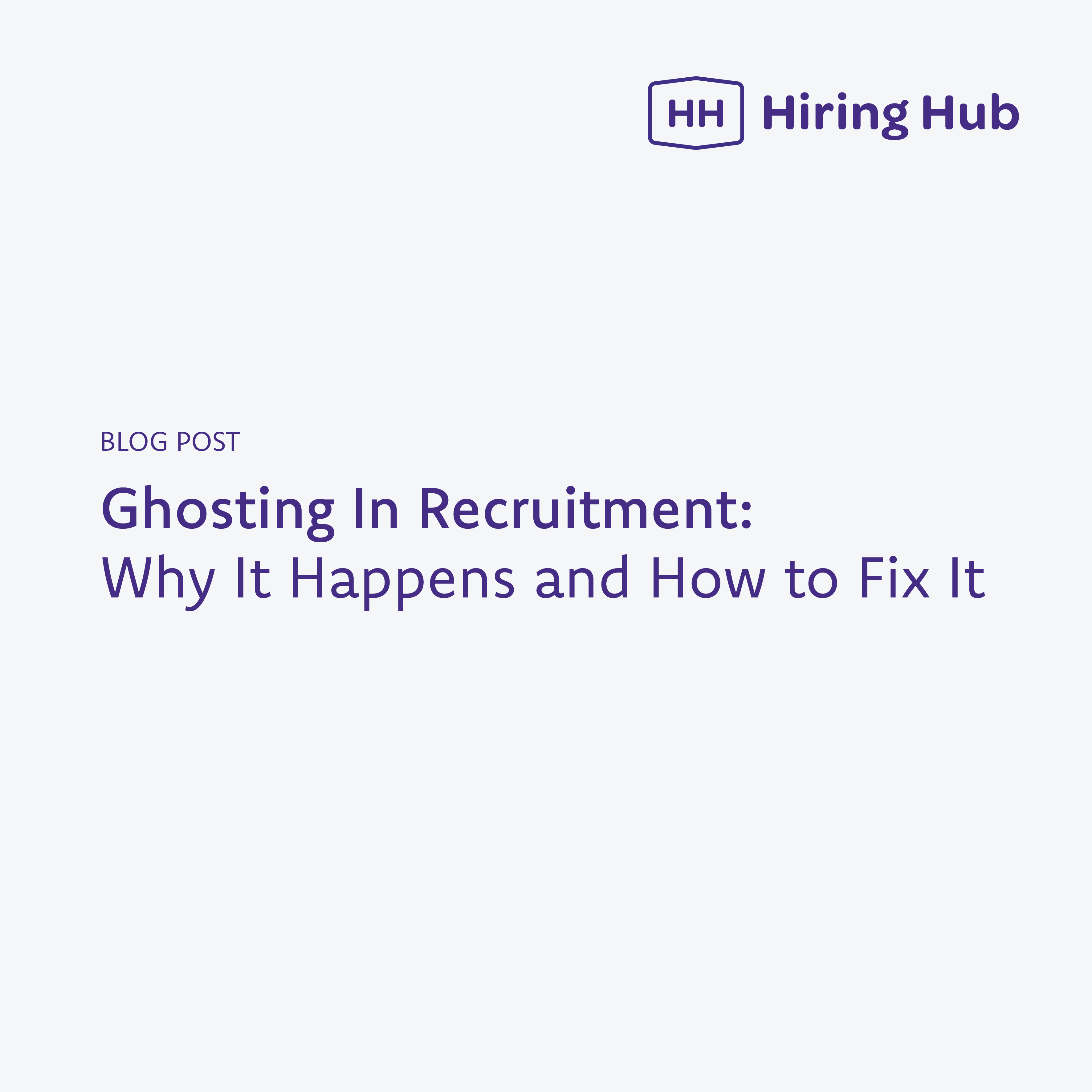Hiring Hub Partners With Hireful!
The Hiring Hub team are delighted to announce an exciting new partnership with Applicant Tracking System (ATS) provider, hireful.
Quiet quitting and quiet firing have dominated HR news headlines in recent years. But now there’s another buzzword to get to grips with — quiet hiring. And it’s seemingly prevalent. 80% of workers say they’ve been quiet hired at some point, and many of them aren’t happy about it.
This article unravels quiet hiring in detail, explaining why employers should avoid using it as a quick fix to their workforce needs. We’ll also describe how to use a structured process to find and retain top talent for your business.
Quiet hiring occurs when organisations gain new talent or skills without officially hiring anyone new. For example, a company might invest in freelance support or redeploy existing staff into different roles to fill key gaps in its organisational lineup.
The term “quiet hiring” was originally coined by Emily Rose McRae, leader of the Future of Work research team at Gartner, who explained,
“With quiet hiring, we're talking about an organisation strategically, at a leadership level, looking at the talent they have across the organisation and where the critical gaps are and finding ways to fill those. It's trying to acquire new skills and capabilities without acquiring new people."
Company example: Google has long used quiet hiring as a strategy to zoom in on employees who are excelling and give them additional opportunities to progress their careers internally. The company also uses a hiring committee of existing Googlers to rate external candidates on their readiness to join the organisation and reduce the chance of a “bad hire.”
When used intentionally, quiet hiring can strengthen teams and create space for growth from within. Here are the specific benefits you can expect:
Company example: When Zapier, a software company, was forced to slow hiring in 2023, it had to make a decision about its talent acquisition team. Instead of making a round of layoffs, the company saw the value in retaining these current team members. It redeployed them into alternative roles, using its secondment programme to match skills with company needs.
Quiet hiring can work in a pinch. But if it becomes your default approach, you risk creating confusion and resentment across your team.
Loud hiring is the opposite. It’s about being upfront about what you need then using a formal hiring process to clarify how you select and reward talent. It doesn’t rely on backdoor role changes or silent promotions. Instead, it invites the right people to step forward and applies the same level of rigour to internal moves as it does to external selection. Here’s why that matters.
Shifting someone into a new role without saying so out loud can look like a quiet favour — the perfect catalyst for rumours that can destroy your company brand.
In contrast, a formal process lays all your cards on the table. It acknowledges, “Hey, we need this role filled,” and lets the whole team understand the skills you require and how you’ll measure them.
How people view and speak about your company as an employer is hugely influential in your ability to attract and retain top-calibre talent. When you make hiring decisions on the down-low, this strategy doesn’t give you a chance to bolster your employer brand. And if word gets out that you’re a fan of trying to quietly squeeze more out of your existing workers, this may damage your reputation.
On the flip side, public job postings with well-defined role descriptions provide transparency in what you’re looking for and how you reward it.
Quiet hiring can severely damage your DEI initiatives. Why? Because there’s always a risk that the people you hire into new positions may be the usual suspects — often those who are visible, always available, and have no caregiving conflicts. That leaves others, including underrepresented talent, overlooked.
A formal hiring process overcomes this bias by giving everyone a fair shot based on skills and readiness, not just whether they were at the water cooler at the right time or able to attend happy hour drinks last Friday night.
When extra work lands on your desk without any extra pay or clear recognition, it feels less like opportunity and more like liberty-taking. It’s not surprising, then, that a Monster poll found 27% of workers would consider quitting if they were quietly hired — and 4% wouldn’t wait to hand in their notice.
Loud hiring prevents this by building guardrails around the role with clear descriptions of what it involves. People know exactly what’s expected from their role, which makes the work more sustainable and the effort worth it.
Scope creep is another danger of quiet hiring, as team members struggle to understand who’s responsible for which part of the puzzle. Roles are loosely defined (if at all), and the result is often a mash-up of tasks that don’t belong together. Scope creep sets in quickly, and employees end up working beyond their remit with no clear endpoint.
Monster’s research backs this up: half of those who were quiet hired said the new role’s responsibilities didn’t match their skill set.
Loud hiring fixes this by forcing definition and a chain of command. It creates a contract that protects both the business and the person stepping into the role.
Last but not least, loud hiring gives employees the compensation they deserve for the work they take on. Rather than employers sneaking extra tasks into an existing role for little to no extra pay, formal hiring allows companies to benchmark salaries and offer pay aligned with specific role responsibilities.
The temptation to hire quietly is strong for HR teams — after all, the talent is already sitting there on the shelf, ready to take on your work. Mark Rothwell, CEO of Hiring Hub notes the impact of this arrangement:
“We have definitely seen a drop in the roles available in the market; however, what we have also noticed over the last few months is an increase in fill rates, meaning that when employers go out with a role they have a much higher intent to recruit.”
With the right plan in place, recruiters, HR pros, or small business owners can easily acquire the talent they need. Here are the steps to take.
Before you move forward, take stock. Look across the business to identify which skill and role gaps exist and where quiet hiring may have already crept in. Ask questions like:
This step is about finding the difference between what’s on paper and what’s actually happening, then using that insight to figure out what roles need formal definition and what talent you still need to find.
Every role in your business, whether filled or still on the horizon, should have a clear job description attached to it. True role clarity requires a breakdown of core responsibilities, required skills, and reporting lines.
With that clarity in place, review the job title and salary attached to each position. Are people being paid for the role they’re actually doing — or the one they were hired into two years ago? Is the title aligned with the scope of work, or is it underselling the level of responsibility?
A commitment to loud hiring doesn’t mean you should avoid offering promotions to your highly-skilled employees. Internal mobility is a fantastic way to hang onto your best talent, preventing them from seeking out the next step with a rival employer.
But to prevent promotions or lateral moves from being quiet hires, you should build a structure around your internal mobility programme. This process defines what each employee needs to achieve to get from A to B to C and the compensation they can expect in each position.
Example: A junior marketing associate earning £28,000 produces content to a brief, manages social scheduling, and reports basic engagement metrics. To move into a content marketing manager role, they must demonstrate they can lead content strategy, brief writers, manage campaigns end to end, and analyse performance against goals — a step up worth £45,000. Their future move to VP of Marketing requires a very different skill set: commercial thinking, budget ownership, leadership of a multi-functional team, and responsibility for top-line marketing performance, worth a salary of £80,000.
Strategic hiring should never be a scramble. The moment it feels chaotic is the moment you’ll fall back on overloading your current talent. Avoid this scenario by turning your wishlist into a working roadmap for your hiring needs. Here’s how:
Once you’ve identified a need to hire externally, be clear about what your hiring team should look for as they source, shortlist, and interview prospective employees.
Hiring Hub’s CEO Mark Rothwell stresses that clarity begins with the precise job title you’re looking for. After all, job listings online are found via specific keyword searches your candidates use, making it even more important that the title does what it says on the tin.
“It’s important that you get the job title bang on. Get it wrong, and no one will apply. Worse than that, no one will even read your ad. But forget fancy job titles, that’s not what does the trick. If it’s a sales job, please, call it a sales job.”
Not every recruiter or platform is going to be right for your business, and wasting time on trial-and-error sourcing can slow things down and stretch your team even further.
Look for partners who can offer:
Quiet hiring might feel like a tactical workaround, but it’s no long-term plan. It breeds confusion, burnout, and bias while leaving too much to chance. Loud hiring is different. It brings structure and visibility to the way you build your team, whether you're promoting from within or going out to market.
That’s where Hiring Hub comes in as a recruitment management platform designed for growing businesses that want to take control of third-party hiring without adding complexity.
With Hiring Hub, you can manage your preferred supplier list in one place, route every briefing through a single platform, and reduce the back-and-forth that slows hiring down. Prefer to expand your supplier base? You’ll get instant access to a network of rated, reviewed recruiters who specialise in your industry, with no trial and error required.
Ready to create a structured hiring process that delivers results? Book a free platform demo of Hiring Hub today.

The Hiring Hub team are delighted to announce an exciting new partnership with Applicant Tracking System (ATS) provider, hireful.

Congratulations! You’ve gone through the hiring process and found yourself a brilliant candidate. Not only someone who can do the job, but someone...

Every job seeker has likely experienced ghosting at some point in their careers—that feeling of constantly checking your phone or refreshing your...